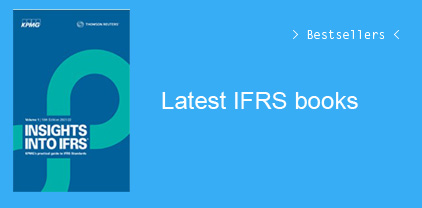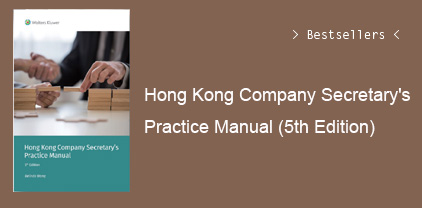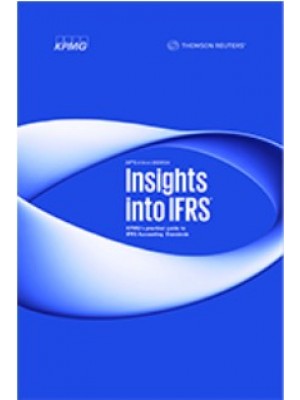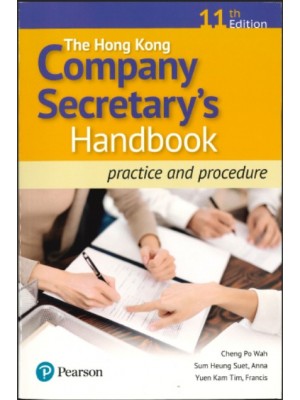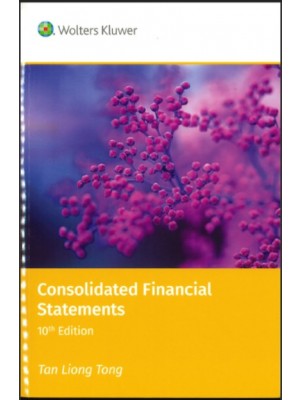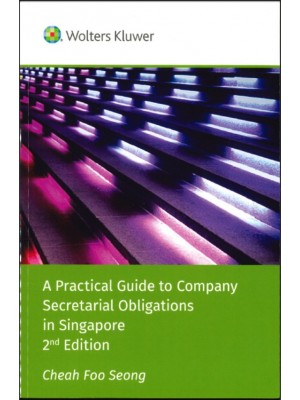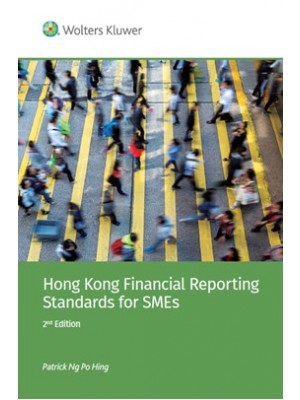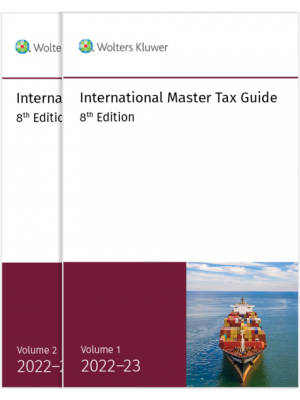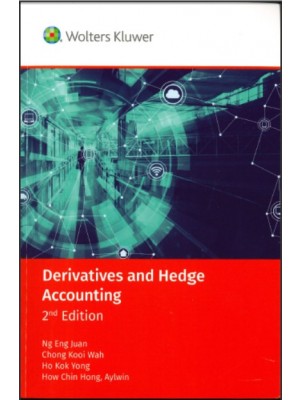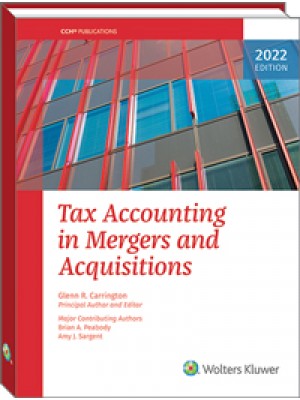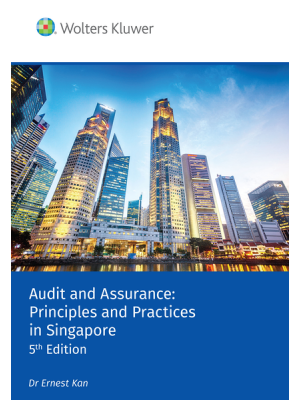Introduction 1
About This Book 2
Foolish Assumptions 2
Icons Used in This Book 3
Beyond the Book 3
Where to Go from Here 4
Part 1: Getting a Financial Accounting Initiation 5
Chapter 1: Seeing the Big Picture of Financial Accounting 7
Knowing the Purposes of Financial Accounting 8
Preparing financial statements 8
Showing historic performance 10
Providing results for the annual report 10
Getting to Know Financial Accounting Users 11
Identifying the most likely users 11
Recognizing their needs 11
Providing information for decision-making 12
Respecting the Key Characteristics of Financial Accounting Information 13
Relevance 13
Reliability 14
Comparability 14
Consistency 15
Accepting Financial Accounting Constraints 17
Considering Your Ethical Responsibilities 18
Following the accountant’s code of conduct 18
Having integrity 19
Maintaining objectivity 19
Achieving independence 20
Introducing the Conceptual Framework of Financial Accounting 21
Chapter 2: Introducing the Big Three Financial Statements 23
Gauging the Health of a Business through Its Financials 24
Reporting Assets and Claims: The Balance Sheet 25
Realizing why the balance sheet is “classified” 26
Studying the balance sheet components 26
Seeing an example of a classified balance sheet 29
Posting Profit or Loss: The Income Statement 30
Keeping a scorecard for business activity 30
Studying the income statement components 31
Seeing an example of an income statement 33
Showing the Money: The Statement of Cash Flows 33
Tracking sources and uses of cash 34
Studying sections of the cash flow statement 34
Seeing a short statement of cash flows 35
Chapter 3: Running the Numbers for Success 37
Identifying Accounting Issues and Solutions 38
Selecting a Business Entity 38
Advantages of the sole proprietorship 39
Owners’ capital 39
Limiting liability with the S Corporation 40
Learning about recognition options 41
Reporting for Small Businesses 42
Preparing reports 42
Analyzing reporting 45
Identifying cost issues 46
Managing Cash 48
Identifying cost issues 48
Improving cash flow 53
Chapter 4: Acronym Alert! Setting the Standards for Financial Accounting 55
Walking through the Origins of Number Crunching 56
Knowing the Role of the American Institute of Certified Public Accountants (AICPA) 58
ASB audit and attestation standards 59
AICPA Code of Professional Conduct 60
Following Regulatory Issues 61
The U.S Securities and Exchange Commission (SEC) 62
The Sarbanes-Oxley Act of 2002 (SOX) 63
The Public Company Accounting Oversight Board (PCAOB) 64
Getting to Know the Financial Accounting Standards Board (FASB) 65
Understanding generally accepted accounting principles (GAAP) 66
Looking online for the FASB’s standards 67
Part 2: Reviewing Some Accounting Basics 69
Chapter 5: Booking It: The Process Behind Financial Accounting 71
Shedding Some Light on Bookkeeping 72
Analyzing the Effect of Business Transactions 73
Working the fundamental accounting equation 73
Getting familiar with accounts 74
Defining debits and credits 76
Learning about the transaction methodology 77
Defining Journals 78
Using journals to record cash transactions 78
Recording accrual transactions 82
Learning about other journals 84
Seeing examples of common journal entries 86
Bringing It All Together in the Ledger 88
Realizing what a ledger is 88
Posting to the ledgers 89
Viewing an example of a general ledger 89
Recognizing the purpose of the trial balance 91
Chapter 6: Focusing on Accounting Methods and Concepts 93
Distinguishing between Key Accounting Methods 94
The cash basis 94
The accrual basis 95
Sorting through Standards for Other Types of Accounting 96
Managerial accounting 96
Not-for-profit accounting 97
Governmental accounting 98
International accounting 98
Considering the Conceptual Framework of Financial Accounting 99
The objective of financial reporting 100
Characteristics of accounting information 101
Elements of the financial statements 101
Financial statement measurements 102
Part 3: Spending Quality Time with the Balance Sheet 103
Chapter 7: Assessing the Balance Sheet’s Asset Section 105
Homing in on Historic Cost 106
Learning What Makes an Asset Current 106
Cash 107
Short-term investments 108
Accounts receivable 110
Notes receivable 111
Inventory 112
Prepaid expenses 113
Keeping Track of Noncurrent (Long-Term) Assets 114
Meeting the tangibles: Property, plant, and equipment (PP&E) 114
Investigating intangible assets 116
Studying the Asset Section of the Balance Sheet 118
Chapter 8: Digging for Debt in the Liabilities Section 121
Seeing How Businesses Account for Liabilities 122
Keeping Current Liabilities under Control 123
Accounts payable 124
Payroll and taxes 125
Unearned revenue 127
Other short-term liabilities 128
Planning for Long-Term Obligations 130
Managing long-term debt 131
Anticipating contingent liabilities 132
Accounting for Bond Issuances 133
Understanding bond basics 133
Accounting for bonds sold at face value 134
Addressing interest payments 134
Getting and amortizing a premium 134
Reporting a bond discount 135
Retiring and converting bonds 136
Chapter 9: Letting Owners Know Where They Stand: The Equity Section 137
Distinguishing Different Types of Business Entities 138
Sole proprietorship 138
Partnership 139
Corporate 140
Defining Paid-in Capital 141
Recording Retained Earnings 143
Spotting Reductions to Stockholders’ Equity 143
Paying dividends 144
Buying treasury stock 146
Learning about Stock Splits 146
Accounting for Accumulated Other Comprehensive Income 147
Seeing a Sample Equity Section of the Balance Sheet 148
Part 4: Investigating Income and Cash Flow 149
Chapter 10: Searching for Profit or Loss on the Income Statement 151
Presenting the Income Statement in One of Two Ways 152
Recognizing the single-step format 152
Breaking it out with the multiple-step format 153
Defining Different Types of Businesses 154
Providing a service 154
Merchandising to the public 154
Manufacturing a product 155
Examining Income Statement Sections 155
Two types of revenue 156
Contra revenue accounts 157
Cost of goods sold 159
Gross profit 162
Operating expenses 162
Heading toward the bottom line 163
Earnings per share 165
Watching Out for Unusual Income Statement Items 166
Discontinued operations 167
Noncontrolling subsidiary interests 168
Arriving at the Final Product 168
Chapter 11: Following the Money by Studying Cash Flow 171
Understanding the Difference between Cash and Profit 172
Seeing how noncash transactions affect profit 172
Distinguishing costs from expenses 173
Realizing the Purpose of the Statement of Cash Flows 173
Walking through the Cash Flow Sections 175
Figuring cash operating results 175
Showing cash investing transactions 178
Accounting for financing activities 180
Recognizing Methods for Preparing the Statement of Cash Flows 181
Using the direct method 181
Starting indirectly with net income 182
Interpreting the Statement of Cash Flows 183
Looking at Two Sample Statements of Cash Flows 183
Chapter 12: Examining Depreciation Cost Flow Assumptions 187
Discovering How Depreciation Affects All Financial Statements 188
Mastering Costs 189
Defining costs and expenses in the business world 190
Satisfying the matching principle 190
Identifying product and period costs 191
Learning which costs are depreciated 191
Distinguishing among Depreciation Methods 194
Walking through the straight-line method 196
Accelerating by using declining balance 196
Calculating sum-of-the-years’-digits 197
Using the units-of-production method 198
Seeing how the methods compare 198
Figuring partial year depreciation 199
Preparing a Depreciation Schedule 200
Chapter 13: Learning about Inventory Cost Flow Assumptions 203
Discovering How Inventory Valuation Affects the Financial Statements 204
Do Service Companies Have Inventory? 205
Classifying Inventory Types 206
Accounting for merchandising company inventory 206
Accounting for manufacturing company inventory 208
Getting to Know Inventory Valuation Methods 210
Specific identification 211
Weighted average 211
First-in, first out (FIFO) 211
Last-in, first-out (LIFO) 212
Comparing inventory cost-flow assumptions 212
Preparing an Inventory Worksheet 216
Part 5: Analyzing the Financial Statements 217
Chapter 14: Using Ratios and Other Tools 219
Learning about Liquidity Measurements 220
Figuring the current ratio 221
Putting the acid test to work 222
Working with working capital 223
Measuring Profitability 224
Explaining trend analysis 224
Focusing on return on investment 225
Homing in on return on equity 227
Exploring Activity Measures 227
Accounts receivable turnover 228
Inventory turnover 228
Number of days’ sales in accounts receivable 229
Analyzing Financial Statements 230
Using horizontal analysis 230
Comparing with vertical analysis 231
Using Common Size Financial Statements 232
Chapter 15: Got Your Dictionary Ready? Reading Explanatory Notes and Disclosures 235
Realizing How Corporations Should Govern Themselves 236
Identifying Corporate Characteristics 236
Reviewing Common Explanatory Notes 239
Leveling the playing field among financial statements 239
Explaining significant accounting policies 240
Looking for important event disclosures 244
Putting the Onus on the Preparer 249
Chapter 16: Studying the Report to the Shareholders 251
Why Private and Public Companies Treat Annual Reports Differently 252
Fulfilling Three Purposes 253
Serving a marketing and PR function 253
Stating financial performance and goals 253
Meeting regulatory requirements 254
Reading the Annual Report to Shareholders 254
Meeting the chair of the board of directors 255
Highlighting key financial data 255
Touting company achievements 257
Looking into the future 257
Getting to know key management and board members 258
Walking through the Form 10-K 259
Facing page: Identifying the affected company 259
Part I: Learning more about the registrant 260
Part II: Revealing the company’s financial performance 260
Part III: Identifying management and corporate governance 264
Part IV: Exhibits, financial statement schedules, and signature 264
Part 6: Feeling Brave? Tackling More Advanced Financial Accounting Topics 265
Chapter 17: Accounting for Emerging Issues 267
Reviewing Different Technological Effects on Financial Accounting 268
Working in a digital world 268
Discussing transitional recording 272
Introducing the Pharmaceutical Industry 273
Booking pharmaceutical transactions 274
Crediting Research and Development Costs 279
Walking through the background of research and development (R&D) 280
Explaining the effect on relevant industries 281
Realizing constraints for costs and expenses 281
Reporting in the books 282
Recognizing Losses 282
Different types of business interruptions 282
Properly expensing or accruing costs 284
Chapter 18: Accounting for Income Taxes 285
Identifying Financial Income versus Taxable Income 286
Figuring out financial income 287
Taking a look at taxable income 287
Explaining why the two incomes differ 289
Taking Advantage of Net Operating Losses 292
Identifying loss carrybacks 292
Understanding loss carryforwards 293
Presenting a Side-by-Side Comparison of Book and Tax Calculations 294
Taking Deferred Tax Liabilities or Assets to the Balance Sheet 295
Chapter 19: Accounting for Leases 297
Reviewing Lease Basics 298
Identifying leasing advantages 298
Introducing the lessor and lessee 299
Accounting for the Lessee 300
Looking at operating leases 300
Walking through finance leases 302
Presenting a finance lease on the financial statements 304
Accounting for the Lessor 305
Operating leases 305
Direct financing leases 306
Sales-type leases 307
Chapter 20: Reporting Changes in Methods and the Correction of Errors 309
Coping with Accounting Changes 310
Reporting changes in accounting principles 310
Changing a company’s estimates 316
Understanding changes in reporting entities 318
Dealing with Errors 319
Reviewing common types of errors 319
Letting counterbalancing errors lie 320
Restating the financial statements 321
Part 7: The Part of Tens 323
Chapter 21: Ten Financial Accounting Shenanigans 325
Reporting Revenue in the Wrong Period 325
Reporting Fictitious Income 326
Increasing Income with Misleading Events 327
Shifting Expenses Between Periods 327
Misclassifying Cash 328
Failing to Record Liabilities 329
Reporting Liabilities in the Wrong Period 329
Not Disclosing Related-Party Transactions 330
Capitalizing Normal Operating Expenses 331
Deleting Transactions 331
Chapter 22: Ten Accounting Career Opportunities 333
Certified Public Accountant 334
Consultant 335
Corporate Accountant 335
Forensic Accountant 336
Government Accountant 337
Information Technology Auditor 338
Income Tax Accountant 338
International Accountant 339
Non-Accounting Accountant 339
Not-for-Profit Accountant 340
Index 341


